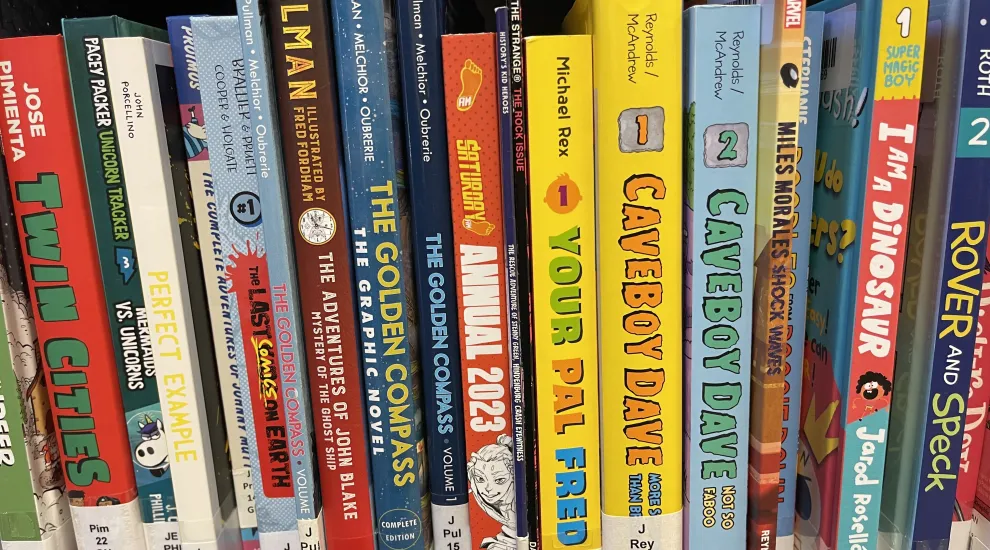
From our Educator Guest Blogger Series
The Newbery Medal is awarded annually for the most distinguished American children's book published the previous year. It is the first children's book award in the world and is arguably the best known and most discussed children's book award. Previous winners include Old Yeller by Fred Gipson (1957), A Wrinkle in Time by Madeleine L'Engle (1963), The Giver by Lois Lowry (1994), and The One and Only Ivan by Katherine Applegate (2013). In 2020, a graphic novel won the award for the first time - New Kid by Jerry Craft.
Even though a graphic novel has won the Newbery (and several others have earned a Newbery Honor distinction), there is still a misconception that graphic novels are not “real” reading. As a former elementary school librarian, I often heard classroom teachers encouraging students to “check out something other than a graphic novel.” A graphic novel is often described as “a long comic book that would need a bookmark,” (Will Eisner). But, while they are similar to comic books, they are also very different.
For example, New Kid is a realistic story that tackles a difficult topic like racism in a way that is thoughtful and relatable to middle school and high school readers. There are many graphic novel genres that have nothing to do with superheroes, such as reinterpretations of classics (Anne of Green Gables, Little Women), popular series (Baby-sitter’s Club, Magic Treehouse) and nonfiction (Nathan Hale's Hazardous Tales, History Smashers). Of course there are silly graphic novels too like, Captain Underpants, Lunch Lady, and Babymouse, but those are the graphic novels that kids love to read and that keep them coming back to the library for more.
Why let students read graphic novels?
Graphic novels can be powerful tools for reaching “reluctant” or emerging readers and English Language Learners. Readers who enjoy graphic novels find them to be more approachable - there are not just pages of words, but also images to support comprehension - they are multi-modal and a great way to teach visual literacy.
Readers can often finish a graphic novel in a shorter amount of time than a traditional novel, helping them feel a sense of accomplishment and giving them a boost of confidence in their reading ability. And they are just fun to read. Graphic novels are not just for children - I love reading graphic novels and there are many written for adults. There are graphic novels appropriate for new readers all the way to adult - there is truly something for everyone.
If a reader in your classroom enjoys reading graphic novels, I urge you to let them! We know that the more a student reads, the better they will get at it and the best way to lose a reader is to not let them choose their own reading material. I promise that if you allow students to continue reading the books they love (including graphic novels), they will show reading growth and eventually expand their choices to other genres.
Check out these graphic novel resources and lists:
- New Kid Discussion Guide: https://jerrycraft.com/resources/
- Full STEAM Ahead - lesson plans that connect primary sources and graphic novels: https://fullsteamahead.cic.sc.edu/
- ALSC Graphic Novels List: https://www.ala.org/alsc/publications-resources/book-lists/graphicnovels2022
- Toon Books: https://www.toon-books.com/

Bio:
Valerie Byrd Fort is an Instructor at the University of South Carolina in the School of Information Science. She was an elementary school librarian for 15 years before joining the faculty at USC. She is also a Teaching & Learning PhD student at USC. Connect with Ms. Byrd Fort on X (@librarygoddess), Facebook (facebook.com/mrsbyrdfort), or her personal website (valeriebyrdfort.com).
* BE OUR NEXT GUEST BLOGGER! LEARN MORE.
Note: This guest blog does not necessarily reflect the views of ETV Education.
